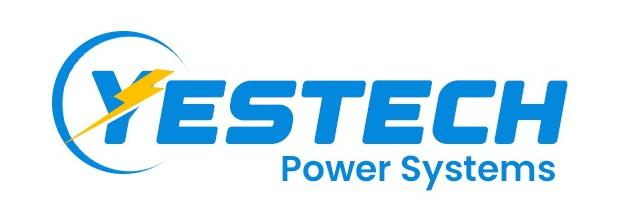In the digital age, data tracking has become ubiquitous, shaping everything from targeted advertising to national security. While today’s practices seem innovative, they are deeply rooted in a long history of surveillance, control, and symbolism. Understanding this historical context reveals how modern platforms like robin + scatter = spins serve as contemporary expressions of age-old power dynamics.
1. Introduction: The Evolution of Data Tracking and Its Societal Impacts
Data tracking in the digital age refers to the collection, analysis, and utilization of user information through various online activities. From cookies to advanced algorithms, modern systems monitor behaviors to personalize content, optimize services, and influence decisions. However, this phenomenon is not new; its roots trace back to historical practices of surveillance and information control, which served sovereign or institutional interests.
Historically, rulers and authorities employed methods like secret patrols, coded messages, and physical censorship to maintain dominance. These early forms of information control set symbolic and procedural foundations that persist today, albeit in digital forms. Recognizing these links allows us to see contemporary data practices not as isolated innovations, but as continuations of long-standing societal strategies.
2. Historical Foundations of Power and Sovereignty in Data Collection
a. Symbols of authority: The significance of crown symbols in governance
Throughout history, symbols such as crowns, scepters, and thrones visually embodied sovereignty. These symbols signified authority, legitimacy, and control over resources and populations. For example, the use of regal crowns in European monarchies visually reinforced the ruler’s divine right and exclusive power over their subjects.
b. Parallels between sovereign rule and algorithmic control
Modern data systems function similarly to sovereign rulers by establishing control over information flows. Algorithms act as digital monarchs, determining what users see, access, or are restricted from, often without transparency. Just as historical monarchs used symbols to project authority, contemporary interfaces employ visual cues—colors, icons, and layout—to influence perception of trustworthiness and control.
c. Case studies of historical sovereignty shaping data practices
| Historical Practice | Modern Equivalent |
|---|---|
| Royal seals and insignia used to legitimize authority | Brand logos and icons signaling trustworthiness |
| Censorship and information suppression | Algorithmic filtering and content moderation |
| Monarchs’ decrees enforced through physical presence | Automated data collection and surveillance tools |
3. The Role of Symbolism and Perception in Data Privacy and Trust
a. The psychological impact of color and symbolism: Purple backgrounds and luxury associations
Colors and symbols evoke subconscious responses. Purple, historically associated with royalty and luxury, is often used in interfaces to suggest trustworthiness or premium quality. This visual cue can influence user perception, making individuals more comfortable sharing data or accepting terms without scrutiny. Similarly, gold and blue hues carry connotations of stability and wealth, subtly shaping trust.
b. How perception influences user acceptance and resistance
Design choices can either foster trust or induce suspicion. For example, clean, minimalist interfaces with familiar icons tend to reassure users, encouraging data sharing. Conversely, complex or cluttered designs, or those employing ominous colors like red or black, may trigger distrust or resistance. Recognizing these cues helps users develop critical literacy regarding data privacy.
c. Modern examples where visual cues mask underlying disadvantages
Many online platforms utilize reassuring visuals—such as padlocks or checkmarks—implying security, while in reality, they may be collecting extensive personal data. For instance, some apps display a green shield to suggest safety, even if their data practices are opaque or invasive. Awareness of these symbols is essential for informed engagement.
4. Progression and Predetermined Outcomes: The Concept of Forward Arrows in Data Flows
a. Interpreting symbols of progress in data analytics
Forward arrows and progression bars are prevalent in user interfaces, symbolizing movement toward goals. In data analytics, these icons often represent the advancement of processes or the achievement of desired outcomes. However, their visual simplicity masks complex, sometimes opaque, decision-making pathways.
b. The idea of progression toward predetermined loss: Historical parallels and modern implications
Historically, progress was often linear and controlled—think of colonial expansion or industrialization—leading to certain outcomes predetermined by those in power. Today, algorithms direct user paths, subtly guiding behaviors toward specific results, such as increased engagement or monetization, often without explicit awareness. This creates a semblance of choice, while outcomes are effectively pre-scripted.
c. Case study: Ms Robin Hood as an example of navigating or subverting these progressions
Platforms like robin + scatter = spins illustrate how modern tools can challenge predetermined data flows. By offering alternative pathways—such as empowering users to understand and control their data—these platforms embody a form of resistance against algorithmic predetermination, echoing historical efforts to reclaim sovereignty.
5. The Legacy of Historical Control in Contemporary Data Tracking
a. How past methods of control inform current algorithms and tracking systems
Modern data systems inherit principles from historical control mechanisms: surveillance, categorization, and regulation. For example, census data collection in ancient civilizations laid groundwork for modern demographic profiling, which feeds into targeted advertising and social monitoring systems. Recognizing this lineage underscores the importance of transparency and accountability.
b. The evolution from physical sovereignty to digital sovereignty
Physical sovereignty involved control over land and people, symbolized through territorial borders and military power. Digital sovereignty shifts this control into cyberspace, where data becomes a new form of territory. States and corporations alike seek to define and dominate this digital space, raising questions about rights, privacy, and autonomy in a networked world.
6. Ms Robin Hood: A Modern Illustration of Historical Power Dynamics in Data Tracking
a. Overview of Ms Robin Hood’s role and functions
As a platform, Ms Robin Hood exemplifies the contemporary struggle for data sovereignty. Its functions include educating users about data rights, providing tools to control data flow, and challenging dominant data practices. It acts as a digital Robin Hood—redistributing control from centralized entities to individuals.
b. How the platform exemplifies the principles of sovereignty, symbolism, and progression
By employing visual cues—such as scatter plots and spinning icons—Ms Robin Hood symbolizes the complex, often opaque, nature of data flows. Its interface challenges the notion of progress as linear, encouraging users to question the predetermined pathways dictated by traditional data systems.
c. Critical analysis of how Ms Robin Hood challenges or reinforces historical notions of control
While it offers tools for empowerment, the platform also navigates the risk of reinforcing existing power structures if not widely adopted. Its design and messaging reflect an awareness of historical control, aiming to subvert it through transparency and user agency.
7. Ethical and Societal Implications of Data Tracking Informed by History
a. The balance of power: Who benefits and who is disadvantaged?
Historically, control favored elites—monarchs, colonial powers, corporations—while the majority bore the costs. Today, data tracking benefits corporations and governments, often at the expense of individual privacy. Understanding this imbalance is crucial for fostering fair policies.
b. The potential for resistance and reclaiming sovereignty in digital spaces
Historical resistance—such as revolts against censorship—finds parallels in digital activism and privacy tools. Platforms like Ms Robin Hood exemplify efforts to reclaim control, advocating for transparency and user empowerment.
c. Lessons from history to foster fair and transparent data practices
Transparency, accountability, and informed consent are key lessons. Recognizing historical patterns of abuse underscores the importance of designing systems that prioritize user rights and societal well-being.
8. Non-Obvious Depths: Hidden Symbols and Messages in Data Tracking Technologies
a. Decrypting visual cues: Color, symbols, and arrows as communication tools
Visual elements in interfaces serve as coded messages. For example, red warnings indicate danger, while upward arrows suggest growth. These cues influence user behavior subliminally, often aligning actions with platform interests.
b. The subconscious influence of design choices on user behavior
Design psychology shows that subtle cues—such as color schemes or iconography—can steer decisions. Recognizing these signals enables users to critically evaluate data ecosystems rather than accept them at face value.
c. The importance of critical literacy in understanding modern data ecosystems
Developing skills to interpret visual cues fosters informed engagement. Critical literacy helps distinguish between genuine security signals and manipulative design, empowering users to protect their privacy.
9. Future Directions: How Historical Awareness Can Shape Ethical Data Practices
a. Learning from historical patterns of control and resistance
History demonstrates that unchecked power often leads to abuse, but resistance and transparency can foster change. Applying these lessons to data practices encourages ethical frameworks grounded in accountability.
b. Designing transparent and equitable data tracking systems
Transparency involves clear communication about data use, while equity ensures fair access and control. Platforms that prioritize these principles help build trust and societal resilience.
c. The potential role of platforms like Ms Robin Hood in fostering empowerment
By providing educational tools and advocating for user rights, such platforms can shift the power balance, aligning digital sovereignty with democratic values.
10. Conclusion: Integrating Historical Perspectives to Navigate Modern Data Tracking
Understanding how history informs current data practices reveals that the struggle for control and sovereignty is timeless. Visual symbols, progression cues, and power structures continue to shape digital ecosystems, often unconsciously influencing user behavior.
“Awareness of historical patterns and symbolism empowers users to critically engage with technology, fostering a more transparent and equitable digital future.”
As we navigate this evolving landscape, platforms like robin + scatter = spins exemplify how modern tools can challenge traditional power structures. Embracing a historical perspective helps us design and advocate for data systems rooted in fairness, transparency, and sovereignty.


